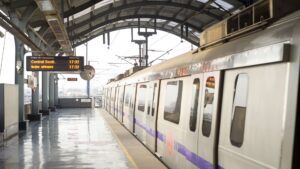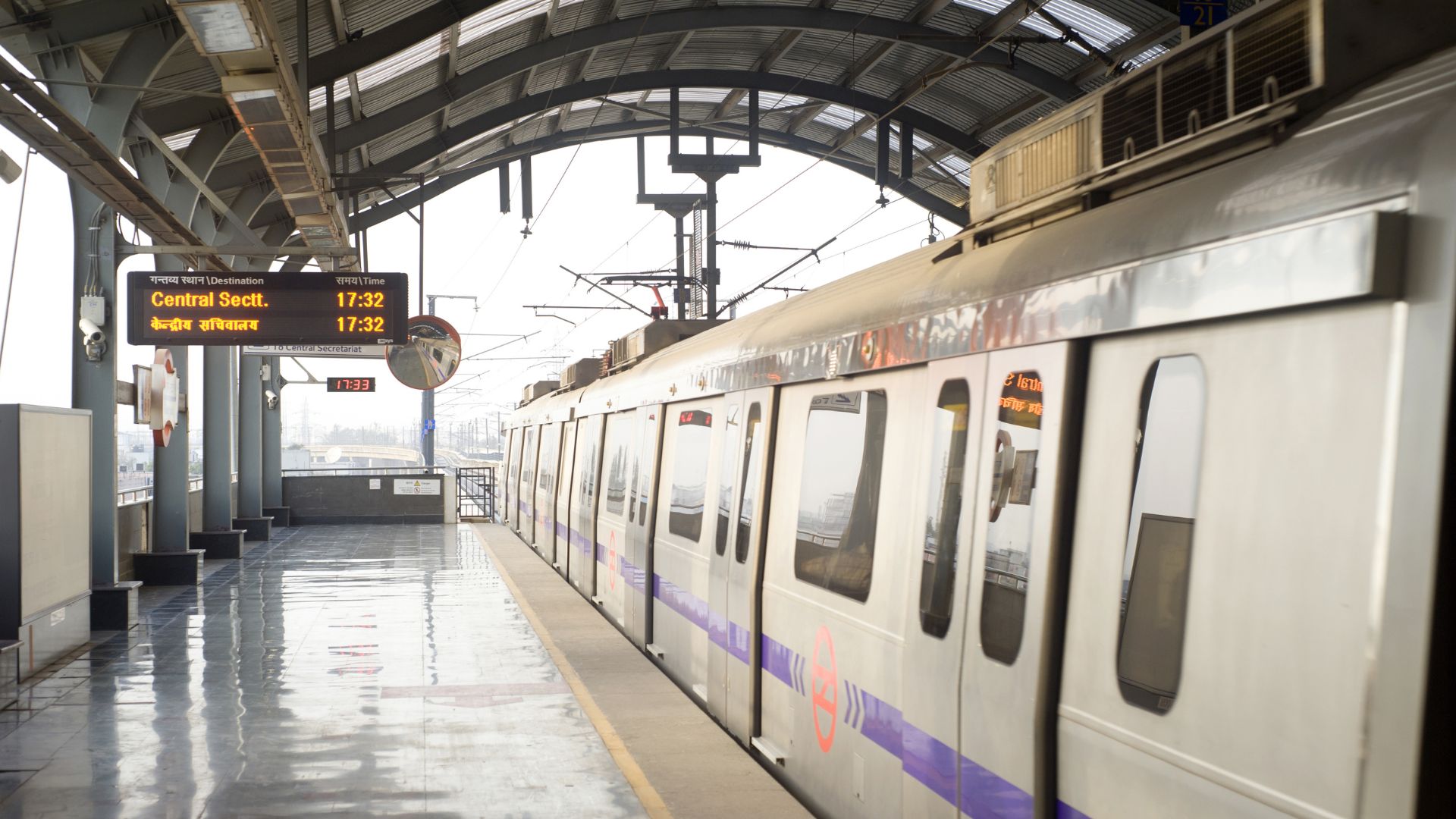 Infrastructure Finance Update for the month of February 2023 covers the updates from the railways, ports and roads and highways sector. For the upcoming fiscal year, the Center has substantially boosted its budgetary capital spending by 37.4% year over year to Rs 10 trillion, including Rs 1.3 trillion in long-term interest-free loans to the state governments. Capital formation in FY24 will be driven by strategic and important infrastructure departments like defense, transportation, and railroads. A major force behind the government’s capex push, the capital expenditure for railways has been significantly increased by 50% year over year to Rs 2.4 trillion for FY24, essentially covering all of the transporter’s investment needs without the need for market borrowings.
Infrastructure Finance Update for the month of February 2023 covers the updates from the railways, ports and roads and highways sector. For the upcoming fiscal year, the Center has substantially boosted its budgetary capital spending by 37.4% year over year to Rs 10 trillion, including Rs 1.3 trillion in long-term interest-free loans to the state governments. Capital formation in FY24 will be driven by strategic and important infrastructure departments like defense, transportation, and railroads. A major force behind the government’s capex push, the capital expenditure for railways has been significantly increased by 50% year over year to Rs 2.4 trillion for FY24, essentially covering all of the transporter’s investment needs without the need for market borrowings.
Railways
The Railways will spend Rs 20,000 crore from its own funds in FY24, increasing its overall capex budget from Rs 2.45 trillion in the FY23 revised estimate to Rs 2.6 trillion. (RE). Budgetary capital expenditure assistance for the railways was increased from Rs 1.37 trillion in FY23BE to Rs 1.59 trillion in FY23RE. Another government capex priority area is the National Highways Authority of India, for which the budget’s capex funding has increased 14% year over year to Rs 1.62 trillion from Rs 1.42 trillion in FY23RE. (FY23BE of Rs 1.34 trillion).
The European Investment Bank is willing to extend its association with the Uttar Pradesh Metro Rail Corporation (UPMRC). The action is being taken as the state prepares to host the Global Investors Summit (GIS) in Lucknow. The European Union’s (EU) lending arm will probably raise the investment from the current 1.5 billion Euros to 3 billion Euros. Three metro initiatives in the state—the Lucknow Metro Project, the Kanpur Metro Project, and the Agra Metro Project—are receiving financial support from it. The EIB has granted the Lucknow Metro Project a credit of Rs 3,502 crore (EUR 450 million). The EIB will provide Rs 5,551.99 crore in funding for the Kanpur Metro Project. (Euro 650 million). It will pay the Government of India 200 million Euros for the undertaking in December 2022. The EIB will lend 450 million euros to the Agra Metro Project. The Uttar Pradesh Metro Rail Corporation intends to extend service to six additional cities: Gorakhpur, Pryagraj, Varanasi, Jhansi, Bareilly, and Meerut.
The Central government is putting a lot of effort into finishing a large-scale national project on schedule in an effort to increase railway connectivity and bring Kashmir closer to the rest of the nation day by day. The project for the Udhampur-Srinagar-Baramulla Railway Link (USBRL) is moving forward and work is proceeding in “top gear” on all fronts. 90% of the project’s sanctioned amount of Rs 37,012.26 crore has already been used. The USBRL project consists of 38 tunnels with a total length of 119 km; the longest tunnel, T-49, is 12.77 km long and was finished on February 15 of last year. In 2002, the 272 km Udhampur-Srinagar-Baramulla Railway Link was designated a “National Project,” underscoring its significance in ensuring seamless and hassle-free access to Kashmir.
Indian Railways has achieved a significant milestone in its mission to transition the nation’s entire rail network to electric traction and away from diesel-powered trains by electrifying all routes in Uttar Pradesh, even as it sets out on a journey to become a “Net Zero Carbon Emission” railway system in another seven years. The entire state’s railway lines are now electrified as a result of the North Eastern Railway, headquartered in Gorakhpur, electrifying the roughly 85-km Shubhagpur-Pachperwa section. With that, the region joined the fully electric East Coast Railway, North Central Railway, West Central Railway, Eastern Railway, and South Eastern Railway. The railways are working towards electrifying all broad gauge routes completely, and have made about 85% of that headway so far. In accordance with India’s global commitment to renewable energy as part of various international “climate” talks, it also has plans to switch to renewables. The Indian Railways are anticipated to have an energy demand of about 8,200 megawatts in 2029–2030. (MW). Officials stated that by 2029–2030, about 30,000 MW of renewable power would be needed to reach net zero carbon emissions.
Ports:
The Ministry of Ports, Shipping, and Waterways has planned several initiatives to create global standard ports in India in order to strengthen the waterways network. The initiative adheres to the Maritime India Vision (MIV) 2030. The government intends to build world-class megaports and transshipment centers, thereby consolidating efforts to make India the world’s factory by increasing container and cargo capacity. The ministry intends to spend between Rs 100,000 and Rs 25,000 crore in port capacity enhancement and development of world-class infrastructure. Natural draughts of more than 18 metres are expected at the upcoming harbours of Vizhinjam in Kerala and Vadhavan in Maharashtra. This would allow ultra-large container and cargo ships to dock at the harbours. 567 projects under the Sagarmala programme with an estimated cost of Rs 59,000 crore have been identified for the holistic development of coastal districts under the four pillars of Coastal Infrastructure Development, Coastal Industrial Development, Coastal Tourism Development, and Coastal Community Development.
The government has decided to support the UDAN (Ude Desh ka Aam Nagrik) plan by building 100 airports by 2024 in order to improve regional air connectivity. Additionally, 1,000 UDAN lines will be operationalized throughout India. The Ministry of Civil Aviation has selected 18 airports in Uttar Pradesh under the UDAN scheme, along with 6 airports in each of Rajasthan and Odisha. Six airports in Uttar Pradesh are now open for business: Kanpur, Prayagraj, Kushinagar, Hindon, Agra, and Bareilly. Three runways in Rajasthan—Bikaner, Jaisalmer, and Kishangargh—have been made operational. Jeypore, Jharsuguda, and Rourkela are now functioning in Odisha.
The Prime Minister officially opened the Shivamogga airstrip in Sogane. He also inaugurated and set the groundwork for over Rs 3,600 crore in development projects in the district. The new airport has a lotus-shaped terminal and was built for around Rs 450 billion. The airport’s passenger terminal building can accommodate 300 passengers per hour. The airport, which is constructed on 775 acres of land, has a 3.2-km-long runway and a passenger terminal with a built-up area of 4,320 square feet. The airport can accommodate planes varying from the ATR 72 to the Airbus 320. After Kempe Gowda International Airport in Bengaluru, it is regarded the second largest airport in the state. The airport is anticipated to improve connectivity and accessibility from Shivamogga and other nearby areas in Karnataka’s Malnad region.
Roads and Highways:
The 32.00 km long, 6-lane, Access-Controlled Greenfield Highway from Chandrasekharapuram to Polavaram on the (NH-544G) Bengaluru-Vijayawada Economic Corridor in Andhra Pradesh has been approved for construction with funds totaling Rs. 1292.65 crore under the Bharatmala Pariyojana. The planned Greenfield Economic Corridor runs from Muppavaram village near Addanki on NH-16 to Kodikonda checkpost (Kodur village) on NH-44 (Bangalore – Hyderabad Road). The route from Muppavaram uses the current NH-16 until Vijayawada. The full 342.5 km corridor between Kodikonda checkpoint and Muppavaram is a Greenfield highway. It is planned to develop this section of the Prakasam district of Andhra Pradesh in 14 Packages.
The government of Bihar is anticipated to spend Rs 44,950 crore on the construction of roads. Former Union Minister Ravi Shankar Prasad told the press in Patna that the government will also be allocating a significant sum of funds in the upcoming fiscal year for the construction of roadways and highways in the state as part of the Bharatmala Pariyojana. The Ministry of Road, Transport, and Highways is anticipated to concentrate on building a 15-kilometer raised road on National Highway-30 in Patna during the fiscal years 2023–2024. The initiative is anticipated to cost Rs 1,000 crore to complete. In Bihar, Kaimur, Rohtas, Aurangabad, and Gaya are the four districts through which the six-lane Greenfield Varanasi – Ranchi – Kolkata highway will travel. 162 kms of the 610 kms of the expressway will be in Bihar. This is one of the National Highways Authority of India’s most ambitious undertakings. (NHAI). In addition to these, the government has set aside Rs 23,175 crore to build 13 bridges across various regions. The first multi-modal logistic park will be built on 100 acres of ground in Fatuha with funding from the centre of Rs 1,000 crore.
The central government approved the Greenfield Highway on the Bengaluru-Vijayawada economic corridor, which is a significant development that will significantly improve the road connectivity between Bengaluru and Vijayawada. In Andhra Pradesh, a 32-km-long, 6-lane, access-controlled highway will be constructed between Chandrasekharapuram and Polavaram on (NH-544G) Bengaluru-Vijayawada Economic Corridor in hybrid annuity mode costing Rs 1,292.65 crore under Bharatmala Pariyojana.
The Ministry of Road, Transport, and Highways is looking into methods to build national highways out of phosphor-gypsum in an effort to lessen their carbon impact. The change seeks to increase sturdiness and reduce construction costs. The second-largest road network in the globe is in India. In this regard, field tests on the National Highways Authority of India’s (NHAI) and the Department of Fertilizers’ initiatives to achieve a circular economy in the use of gypsum will soon begin. The action is in keeping with the government’s pledge to use refuse materials in the construction of environmentally friendly national highway infrastructure in the nation. Phosphor-Gypsum is a byproduct of fertiliser manufacturing. An Indian fertiliser firm was the first to build a phosphorus-gypsum road. The road was later assessed by the CRRI (Central Road Research Institute), and based on their findings, the Indian Road Congress (IRC) officially accredited neutralised Phosphor-Gypsum waste material for road building for a three-year period. The NHAI has already used ‘Fly Ash’ in road construction and the creation of flyover embankments. It is a fine residue from the burning of coal in thermal power plants. (TPPs). A total of 1.2 crore cubic metres of fly ash were used in the building of the 125-km-long six-lane “Eastern Peripheral Expressway.”
Centre for Financial Accountability is now on Telegram. Click here to join our Telegram channel and stay tuned to the latest updates and insights on the economy and finance.

